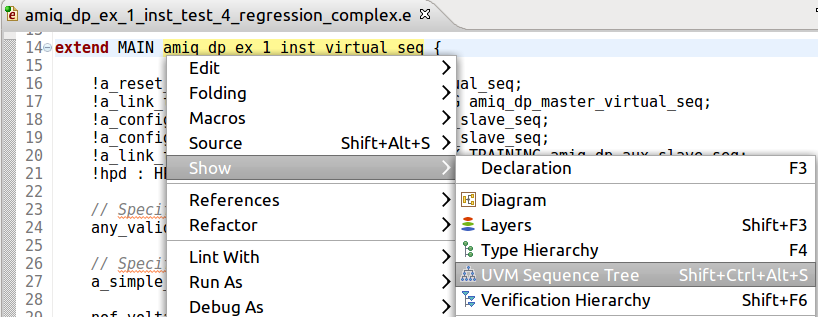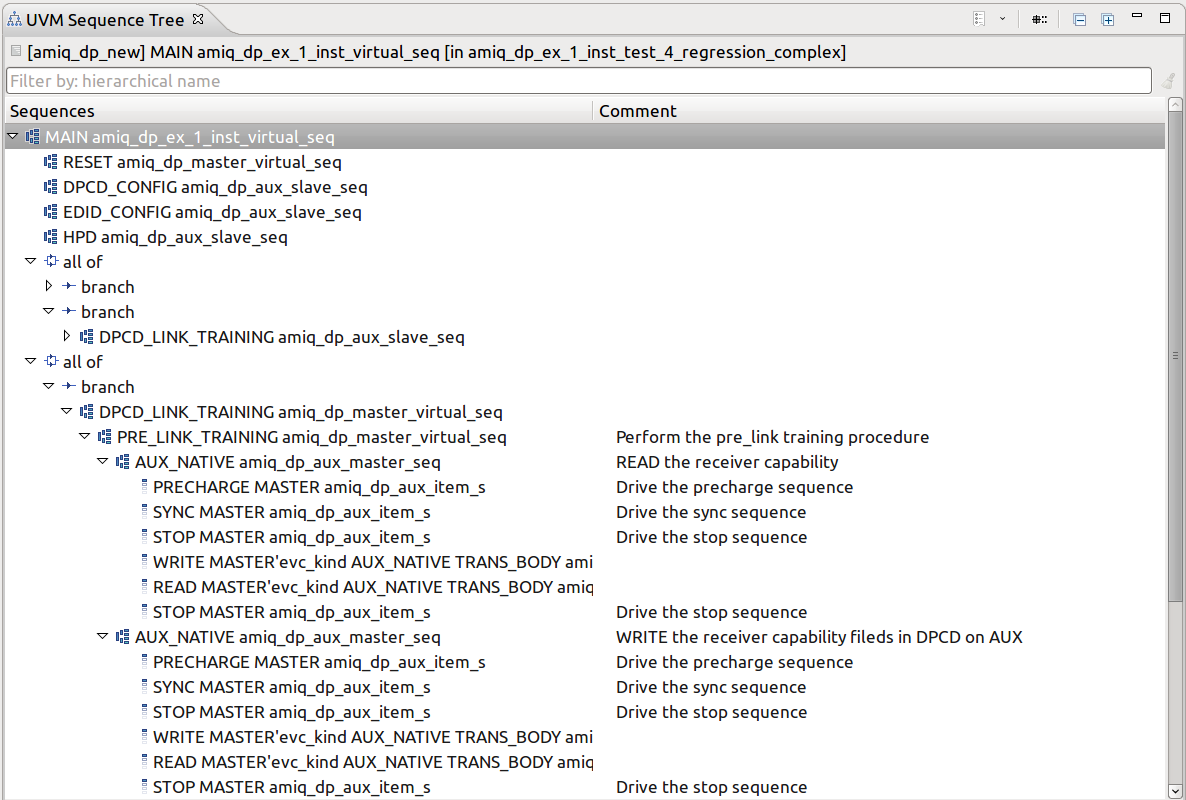UVM Sequence Tree
The UVM Sequence Tree View presents the call tree of a sequence.
Place the editor cursor on a sequence, right click and choose or press Ctrl+Alt+Shift+S.

The view is automatically raised and populated with the call tree of the selected sequence.
The call tree is made of all sub-sequences that are triggered by the selected sequence, in order, recursively down to leaf items.

The pre_body(), body() and post_body() methods of each sequence are analyzed, along with all TCMs called directly or indirectly from any of these methods.
Note
All relevant layers (extensions) of each TCM are analyzed according to their type (is also, is first, is only). A TCM layer is relevant if it belongs to a struct layer whose determinant is the same or included by the determinant of the sequence layer where the view was called.
Note
Only the modules loaded up to and including the module where the view is triggered are analyzed. For example, when triggered from a particular test, sequence calls in other tests are not analyzed. See also how DVT handles e Language Test Files and the Compile Order view.
Note
all of, first of and start actions are also shown.
Note
A sub-sequence may be called using a do action or started using the seq.start_sequence() function.
Tip
Double click on any node to jump to the sequence call.
Tip
Right-click on a sequence node to Show UVM Sequence Tree of the selected sequence. Practically set the selected sequence as root.
Toolbar

|
Show History List |
Click to see the previously inspected sequence call trees. |
|---|---|---|

|
Prepend Package Name |
Prepend the enclosing package name to the name of each class. |
Icons

|
Sequence. |
|---|---|

|
Sequence item. |

|
All of/first of block. |

|
All of/first of branch, or start action. |